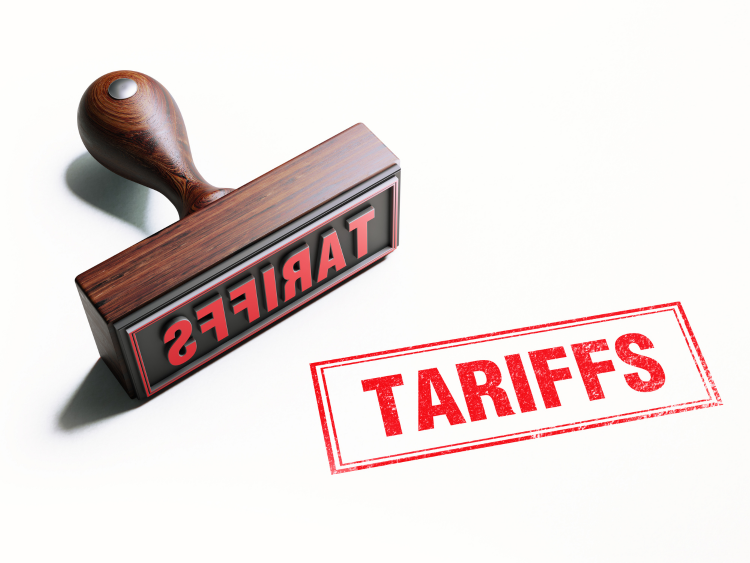Global Trade

December 9, 2024
Unlocking FTZ Essentials: What the aluminum industry needs to know
Written by Gabriella Vagnini
There was a Foreign Trade Zone (FTZ) webinar on Thursday, and it got me thinking about just how crucial these zones are when it comes to navigating tariffs. Some players in the industry have found ways to use FTZs to their advantage, especially when it comes to economic strategies like cash and carry trades.
Here are key takeaways on FTZs and their impact on aluminum and scrap markets.
Key takeaways on tariffs and FTZs
- Tariff impact and FTZs: Section 232 tariffs must enter US FTZs under “privileged foreign status” (PFS). This means their tariffs are locked in based on their classification when they first enter the FTZ. Once the products leave the FTZ for US consumption, the tariffs are applied at those locked rates. (Make a note of this. It’ll be key if new tariffs are piled on.)
- Section 232 tariffs: Aluminum imports face a 10% tariff under Section 232 due to national security concerns. Agreements with the EU, Japan and the UK have created tariff rate quotas (TRQs), which let limited quantities of aluminum enter the country tariff-free while applying tariffs to excess volumes.
- Impact of Section 301 tariffs: Tariffs targeting Chinese goods, including aluminum-related products, range from 7.5% to 25%. These tariffs are said to address unfair trade practices, like intellectual property violations.
- FTZ benefits and challenges: Using FTZs helps businesses delay or reduce tariff costs by holding imported aluminum in a duty-free environment until it’s ready to enter the US market. Companies must carefully classify products under HTSUS (Harmonized Tariff Schedule) codes, as mistakes can result in hefty fines or higher tariff costs. While the London Metal Exchange (LME) changed their warehousing rules stemming from what was said to be a squeeze on the ali market, there are still ways to use the FTZ without venturing into the gray area. If the LME warehouse is willing to negotiate their fees, finance rates are low and the spreads are in a wide contango, then a cash and carry could be a lucrative option. Taking the physical into an LME warehouse (all LME warehouses are in FTZs), then hedging your futures position and rolling your position in a wide contango market would be one way to take advantage of the FTZ.
How this relates to aluminum and scrap markets
- Aluminum market reaction: For primary aluminum, higher tariffs or quotas on imports drive up costs for manufacturers relying on foreign metal. This incentivizes more domestic production and investment in local aluminum facilities, like ARZYZ in Mexico, to meet demand while avoiding tariffs — that is, while Mexico is still tariff free for these metals. The U.S. is the biggest importer of aluminum, and the top country to export primary aluminum into the US is Canada. We must also note that while the intent is to drive up domestic production, the US does not produce enough aluminum for consumption. While there are new facilities in the works, they are at least three to five years from live distribution.
- Secondary aluminum (recycled): Higher import tariffs could make recycled aluminum more competitive, as companies look for cheaper alternatives to meet their needs without importing primary. The main concern here is the drop in aluminum recycling in recent years in the US. While new, ultra-low carbon facilities are aimed at maximizing the most extruded metal from recycled materials, the sources of these recycled materials to feed these facilities are a growing concern.
- Scrap metal market reaction: Increased Demand for Scrap. Tariffs on imported aluminum push manufacturers to source local scrap to avoid higher costs. This boosts the value and demand for aluminum scrap. The increase in domestic demand will prevail, that is if there is enough recycled metals. As it is likely that if primary aluminum gets slapped with additional tariffs, manufacturers will most likely look to recycled metals to fill the void and heightened fees of primary ali. Export Challenges- If scrap exporters face retaliatory tariffs or logistical hurdles, they might prioritize selling domestically, tightening supply chains further and potentially raising prices.
- Impact on manufacturers: Companies relying on imported aluminum or aluminum-containing goods (like cans, car parts or appliances) may face increased costs. They’ll need to either absorb these costs or pass them on to customers. This could further boost demand for domestic scrap metal as a cost-effective option. However, this would add to the supply shortage.
- Trade policy dynamics: FTZ usage can help soften the blow of tariffs by offering duty deferrals or savings, but it requires detailed planning (incorporating custom brokers and FTZ-approved warehouses for assistance). Companies that don’t effectively use FTZs risk getting hit with steep costs, creating ripple effects in the aluminum and scrap markets.
Bottom line
The Potential: Tariffs and FTZ policies act as both a challenge and an opportunity. For aluminum producers and scrap metal markets, these rules could fuel growth in domestic recycling efforts, drive investments in local production capacity, and potentially reshape global trade flows. Businesses need to be strategic in navigating these policies to stay competitive.
The Disadvantage: Looking at the downsides of trade restrictions or tariffs on aluminum, the U.S. could be shooting itself in the foot. We’ve become way too dependent on imports because our domestic aluminum industry has been shrinking for decades. Back in the 1980s, the U.S. was producing well over five million metric tons, but today, we’re down to only four smelters operating, and just two of them are running at full capacity. That’s not nearly enough to cover our needs. Last checked, the U.S. was producing less than a million metric tons of aluminum while consuming over four million metric tons a year. Domestic production has said to decrease by almost half from the late 1990s to four million metric tons in 2023.
If we start imposing restrictions on other countries, they’re likely to hit us back with tariffs or limits on U.S. exports. On top of that, we just don’t have the infrastructure to pick up the slack domestically. Energy costs are a huge factor here, plants in places like Missouri and Kentucky have shut down recently because electricity costs are through the roof. Without affordable power and some serious investment in modern facilities, we’re not in a position to support our growing aluminum demand, especially for things like electric vehicles and renewable energy projects.






